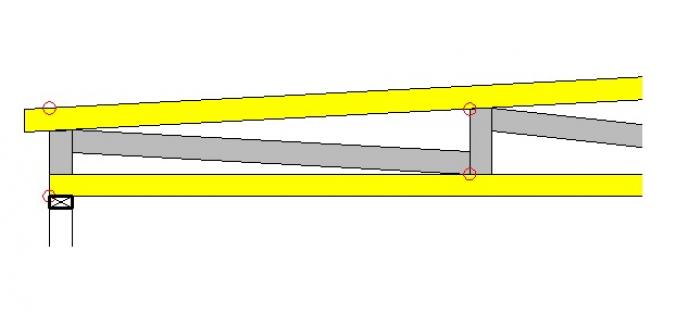
There are three factors that most affect the strength of low pitch trusses: pitch, span and wind speed.
Combine these three at their most extreme, i.e. low pitch, large span and high wind speeds, and this is where you’ll find a truss ‘working’ the hardest. I design trusses for many roofs around NZ that have these characteristics, your typical 5 degree longrun roof spanning over the lounge & dining rooms.
Pitch – the higher the pitch, the taller (higher) the truss is, and the stronger it is.
Span – the bigger the span, the higher the pitch needs to be.
Wind – the lower the pitch, the more effect the wind has on the truss.
There are a number of techniques that can be employed to help this roof shape work, a few of these being:
Raising the end height of the truss (usually to around 250 – 500mm)
Using higher strength timbers at key points in the truss
Decreasing the truss centres, to lessen the load on the truss.
In most situations, raising the end height will have the biggest effect on the strength of the truss. A very low end height usually results in a large deflection in the ceiling close to the external wall, which is obviously undesirable.
Why is this important?
The reason it is important to understand how these factors work together is this: the strength of the truss can change a lot if one of the factors change. For example, raising the pitch makes the roof stronger, as well as reducing the truss span (using an internal wall or beam).
A specific buildable truss design should always be obtained prior to completing your plans. This will ensure there no changes to your roof after plan completion or building consent, and it will guarantee the integrity of your roof.
